There are three other green Malachites which could be confused with these two species all now assigned to the genus Clanoptilus;
barnevillei (Puton). At least tarsi yellow (Joy), in M.bipustulatus and C.viridis the tarsi is always black. Appears to be restricted to north Norfolk although NBN has a record from north Kent.
strangulatus (Abeille) (vulneratus in Joy). Green colour duller and without the lateral elytral setae visible in M.bipustulatus and C.viridis. Confined to Essex and Kent around the Thames estuary.
marginellus (Olivier). Pronotal lateral margins reddish-yellow. Widespread in the south but local.
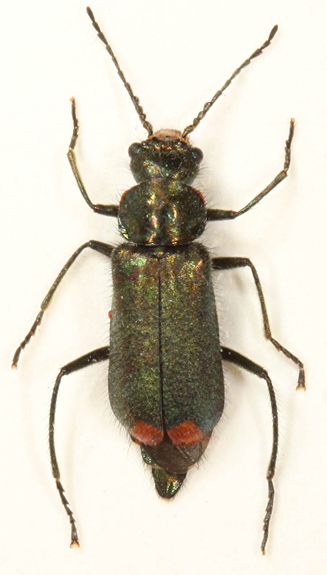
M.bipustulatus
Female
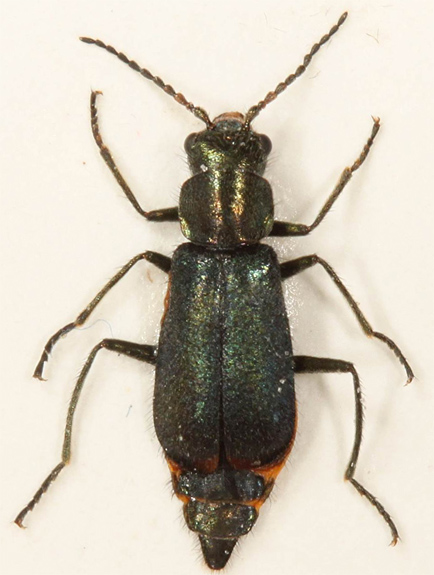
C.viridis
Female
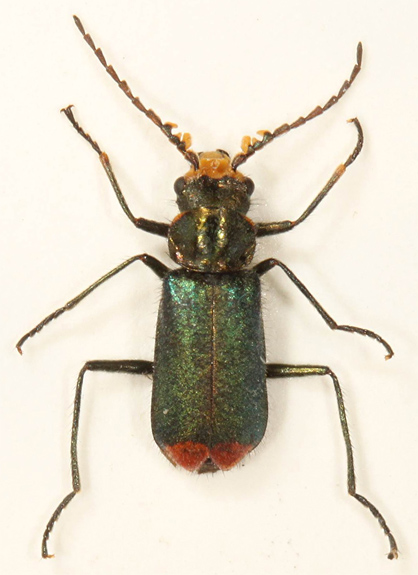
M.bipustulatus
Male
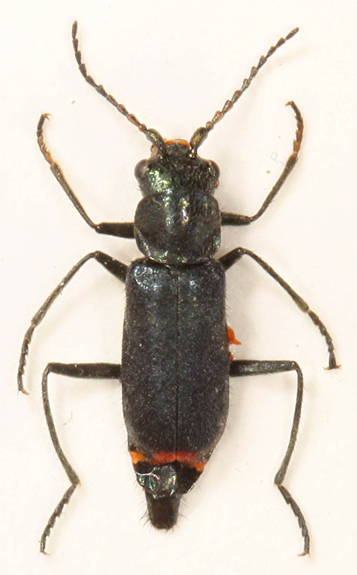
C.viridis
Male
Following is a list of differences betwen the two species.
Colour
M.bipustulatus: Elytra usually a bright emerald green, although can be darker, duller and sometimes even bronze. Elytral apices normally bright red. Pronotum with anterior angles normally thinly red but rarely concolorous.
C.viridis: Elytra green but normally with a distinct bluish hue. Red apices less distinct, often obsolete and definitely duller red. Pronotum always concolorous, never with the anterior angles red.
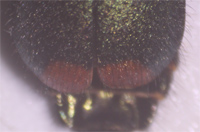
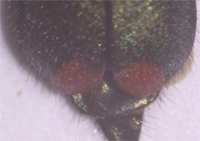
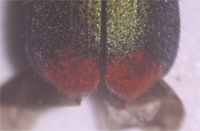
M.bipustulatus
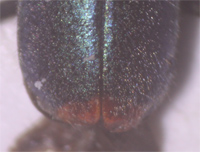
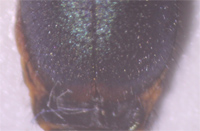
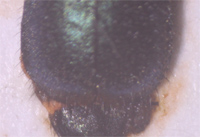
C.viridis
Pronotum
M.bipustulatus: Transverse. In my specimens 1.33 X broader than long.
C.viridis: Less transverse, almost quadrate, In my specimens 1.25 X broader than long.
Fowler uses this character to separate the species but I think it's marginal as there other, more reliable, characters.
Thoracic vesicles
M.bipustulatus: Both sexes have bright red two pronged protruding vesicles from the sides of the thorax. In fresh specimens these can be extruded by gentle pressure on the pronotum.
C.viridis: Neither sex has these vesicles although some specimens may have a a pink fleshy protuberance anteriorly.
This is not not a good diagnostic feature in dry specimens and should not be confused with the abdominal vesicles which occur in both sexes of both species.
Antennae
M.bipustulatus: In both sexes the 2nd and fourth segments are widened internally, almost serrate. In the male only this is augmented by large, yellow protuberances on segments 2-4
C.viridis: Segment 2 is sometimes slightly widened but segment 4 is simple, at most conical and segment three is small. In the male segment 1 is distinctively expanded/inflated.
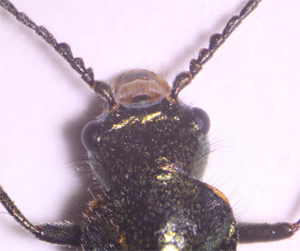
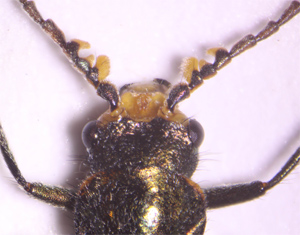
Malchius bipustulatus
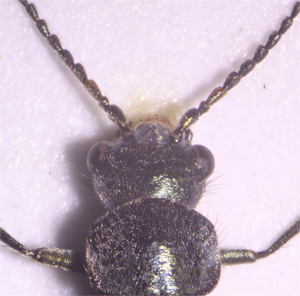
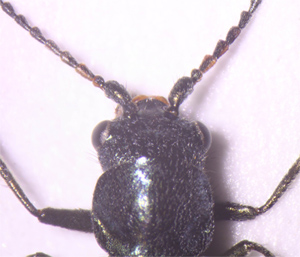
Cordylepherus viridis
Head
To my mind this the real banker separating the species.
M.bipustulatus: Anterior margin of head between antennae curved backwards.
C.viridis: Anterior margin of head between antennae very obviously produced forwards.
See plates above.